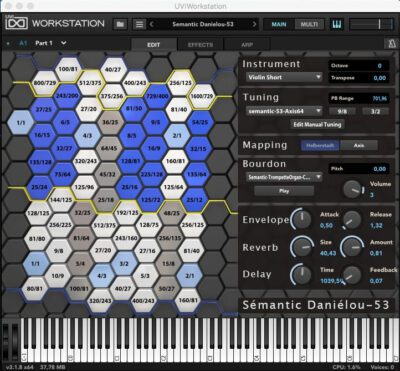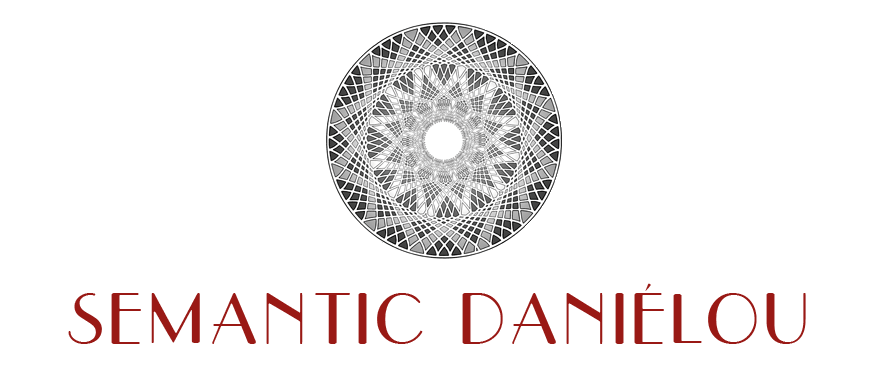 The so-called “tempered” scale has been in use by Occidental musicians for two centuries.
The so-called “tempered” scale has been in use by Occidental musicians for two centuries.
It follows on from the “unequal” temperaments of the Baroque period, which were designed to reduce the number of notes needed for the harmonies in use at the time, thus making it easier to play certain instruments while retaining a certain degree of accuracy. The ’12-note equal temperament’ used by default in Occidental instruments today standardises the intervals identically in all keys, to the detriment of accuracy, since apart from the octave, the eleven other intervals it proposes are all more or less approximate in terms of their acoustic consonance.
The fruit of years of research and experimentation with Indian modal music and other Eastern musical traditions, Alain Daniélou’s theory, described in his book “Sémantique Musicale“, first published in 1967, offers an innovative approach to the perception of pitch relationships.
The system he developed belongs to the family of just intonation scales, also known as ‘natural’ in the sense that their intervals conform to those of the harmonic series (in other words, to the ‘physical’ laws of nature). These intervals are expressed in the form of ratios made up of whole numbers in both numerator and denominator, establishing harmonic relationships between all the notes in the overall system, in this case 53 per octave.
The particularity of this approach is that it highlights the 2, 3 and 5 harmonics and their combinations, with the intervals derived from these three factors having the power, according to Alain Daniélou, to provoke very specific and apparently universal feelings and emotional reactions in human beings.
These two specific features, i.e. bringing together intervals in the right intonation with a harmonic limit of 5, and the fact that they convey an expressive content, are found in the musical theory of the Hindus and their 22 shrutis.
Technological advances have led to the development of several instruments that conform to Alain Daniélou’s theory. The latest is a virtual instrument, the ‘Semantic Daniélou-53’. A first version was launched in 2018 at a presentation day at IRCAM (Institut de Recherche et Coordination Acoustique/Musique).
A second version was released in early 2024. It features new scales and new sounds, as well as various functional improvements, including the ability to import your own scales.
It is available as a free download.

